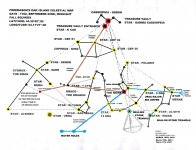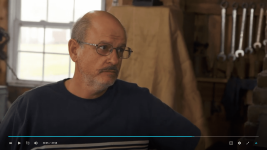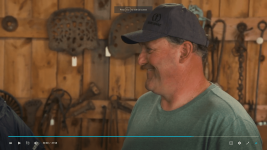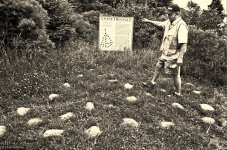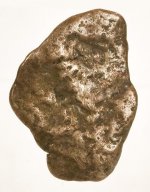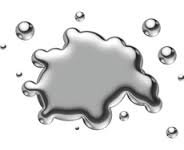Robot
Bronze Member
- Mar 10, 2014
- 2,039
- 1,740
- Primary Interest:
- Other
The (Untold) Story of The Oak Island Money Pit
The Oak Island Money Pit was constructed by the “Powers That Be” who were and still to this day, The Secret Force that controls the course of mankind on earth.
This organization is known as - The Freemasons.
The Story of The Oak Island Money Pit begins in the 1760’s
It was conceived by a number of Britains’ high ranking Naval Officers, who were Masonic Degree Members of the Freemasons and belonging to the Premier Grand Lodge of England.
These members were:
Washington Shirley, 5[SUP]th[/SUP] Earl Ferrers — Vice Admiral - Grand Master of the Masonic Lodge — Premier Grand Lodge of England
George Anson, Baron Anson — Admiral of the Fleet
George Keppel, 3[SUP]rd[/SUP] Earl of Albemarle - Commander-In-Chief
Augustus Keppel, 1[SUP]st[/SUP] Viscount Keppel — Rear Admiral — Brother to George Keppel
William Keppel — Lieutenant-General — Brother to George Keppel
George Pocock — Admiral — Commander of the Invasion of Havana
and
Benjamin Franklin — First Grand Master of Pennsylvania who met in 1760 with the Grand Master of England to discuss their plan.
These Masons were members of the Whig Party opposed to the next successor to the throne, the unstable King George III.
Their plot originated after King George III’s continued destruction of their Whig’s political power and his redirection of this power to the Tory Party.
These Freemason feared for the continuance of their organization during the Seven Years’ War, with the imminent invasion of England by the joint forces of France and Spain.
Spain outlawed all forms of secret organizations, including the Freemasons.
The Masons planned redirecting all their fortunes to the “New World” (North America), to enable the transfer of the Masonic organization, if and when these fears materialized.
Their military plan entailed the capture of Havana in 1762.
Havana’s Morro Castle and the Jesuit's Cathedral were the Fort Knox of Spain, holding the plunder of South and Central America’s treasure prior to its shipping to Spain.
The invasion of Havana was under the command of George Keppel, with Admiral George Pocock and Keppel’s two brothers Augustus and William Keppel, commanding the actual attack.
They were successful with the capture of Havana and Fort Morro and its unprecedented amount of treasure.
With the aid of the Jesuits they captured the Jesuit`s Cathedral`s mass fortune transferred there from the Americas.
They also captured a number of the Spanish Fleet, which were needed to accomplish their plan.
Accordingly, Admiral Pocock returned to England with the main English fleet carrying a portion of the treasure, while Augustus and William Keppel along with their crew and Masonic engineers all sworn to secrecy, manned the Spanish Galleons and the British Man of War Vessels.
This treasure was diverted to a small island off the coast of New England and Nova Scotia, now called Oak Island.
At Oak Island, the treasure was buried based on the Masonic “Royal Arch” (Enoch’s Temple) doctrine, consisting of nine arches going down nine levels by way of the main shaft (The Money Pit) which was then dug further down to the bedrock.
From the ninth level another circular tunnel was constructed which ran back up to a point above the known water level, roughly 20 feet underground and then towards the North/West end of the island.
This tunnel stopped roughly 50 feet out under the ocean where an enormous cavern was built to hold the treasure.
The treasure was carted down the main shaft and placed up into this cavern.
To conceal their plot they had the Spanish ships and some of the British ships dismantled with all the wooden parts not used in the construction of the shaft, tunnels, and cavern, burnt and all the metal parts, canons, anchors, and bolts placed at the bottom of the main shaft.
A Flood Tunnel was built out to the ocean to booby trap any treasure seekers attempts to follow down the main shaft.
A large stone was placed above the air lock (8[SUP]th[/SUP] level) as bait to activate the flooding.
This stone had strange engravings on it to entice any unworthy treasure seekers to pause and take the bait (stone) away for deciphering, thus allowing time for the tunnels and main shaft to fill with water and be destroyed forever.
The Masons could access the Treasure Cavern under the ocean by digging down to its entrance from where they triangulated a set Marker on the shore to be.
Once the treasure was secured in the cavern and all the evidence was hidden from the island, it was documented that the Keppels sailed back to England with a few ships and a small portion of the treasure.
They claimed that the remainder of the fleet had sunk in a hurricane on route.
The Masons left several Marker Stones on the island to relocate the treasure.
1 large triangle or more precisely a crude Sextant
Many drilled holed Marker Stones
1 large Marker Stone Cross
These combined Marker Stones from the Freemason’s Star Map are used to cross triangulate to locate the entrances to where the Treasure Cavern and Sir Francis Bacon’s Tomb are located.
Is the treasure still in this cavern?
I believe it was removed shortly after the American Revolution.
One of the three original discoverers of the Money Pit was Daniel McGinnis, who stated he was drawn to the island when he noticed strange lights appearing on the island just prior to his discovery.
These lights were made by the Freemasons when they returned for their treasure.
This Masonic party was headed up by George Washington, President of the United States — acting Grand Master of the Washington DC Masons.
The Treasure’s vast fortune was used to further the power of the Freemasons in their New World and accomplishing Bacon’s dream of a New Acadia.
Sir Francis Bacon, along with his original and unpublished Manuscripts, are resting in his Tomb, located between Nolan’s Cross and the Money Pit, watched over by a statue of the Knights Templar.
The Oak Island Money Pit was constructed by the “Powers That Be” who were and still to this day, The Secret Force that controls the course of mankind on earth.
This organization is known as - The Freemasons.
The Story of The Oak Island Money Pit begins in the 1760’s
It was conceived by a number of Britains’ high ranking Naval Officers, who were Masonic Degree Members of the Freemasons and belonging to the Premier Grand Lodge of England.
These members were:
Washington Shirley, 5[SUP]th[/SUP] Earl Ferrers — Vice Admiral - Grand Master of the Masonic Lodge — Premier Grand Lodge of England
George Anson, Baron Anson — Admiral of the Fleet
George Keppel, 3[SUP]rd[/SUP] Earl of Albemarle - Commander-In-Chief
Augustus Keppel, 1[SUP]st[/SUP] Viscount Keppel — Rear Admiral — Brother to George Keppel
William Keppel — Lieutenant-General — Brother to George Keppel
George Pocock — Admiral — Commander of the Invasion of Havana
and
Benjamin Franklin — First Grand Master of Pennsylvania who met in 1760 with the Grand Master of England to discuss their plan.
These Masons were members of the Whig Party opposed to the next successor to the throne, the unstable King George III.
Their plot originated after King George III’s continued destruction of their Whig’s political power and his redirection of this power to the Tory Party.
These Freemason feared for the continuance of their organization during the Seven Years’ War, with the imminent invasion of England by the joint forces of France and Spain.
Spain outlawed all forms of secret organizations, including the Freemasons.
The Masons planned redirecting all their fortunes to the “New World” (North America), to enable the transfer of the Masonic organization, if and when these fears materialized.
Their military plan entailed the capture of Havana in 1762.
Havana’s Morro Castle and the Jesuit's Cathedral were the Fort Knox of Spain, holding the plunder of South and Central America’s treasure prior to its shipping to Spain.
The invasion of Havana was under the command of George Keppel, with Admiral George Pocock and Keppel’s two brothers Augustus and William Keppel, commanding the actual attack.
They were successful with the capture of Havana and Fort Morro and its unprecedented amount of treasure.
With the aid of the Jesuits they captured the Jesuit`s Cathedral`s mass fortune transferred there from the Americas.
They also captured a number of the Spanish Fleet, which were needed to accomplish their plan.
Accordingly, Admiral Pocock returned to England with the main English fleet carrying a portion of the treasure, while Augustus and William Keppel along with their crew and Masonic engineers all sworn to secrecy, manned the Spanish Galleons and the British Man of War Vessels.
This treasure was diverted to a small island off the coast of New England and Nova Scotia, now called Oak Island.
At Oak Island, the treasure was buried based on the Masonic “Royal Arch” (Enoch’s Temple) doctrine, consisting of nine arches going down nine levels by way of the main shaft (The Money Pit) which was then dug further down to the bedrock.
From the ninth level another circular tunnel was constructed which ran back up to a point above the known water level, roughly 20 feet underground and then towards the North/West end of the island.
This tunnel stopped roughly 50 feet out under the ocean where an enormous cavern was built to hold the treasure.
The treasure was carted down the main shaft and placed up into this cavern.
To conceal their plot they had the Spanish ships and some of the British ships dismantled with all the wooden parts not used in the construction of the shaft, tunnels, and cavern, burnt and all the metal parts, canons, anchors, and bolts placed at the bottom of the main shaft.
A Flood Tunnel was built out to the ocean to booby trap any treasure seekers attempts to follow down the main shaft.
A large stone was placed above the air lock (8[SUP]th[/SUP] level) as bait to activate the flooding.
This stone had strange engravings on it to entice any unworthy treasure seekers to pause and take the bait (stone) away for deciphering, thus allowing time for the tunnels and main shaft to fill with water and be destroyed forever.
The Masons could access the Treasure Cavern under the ocean by digging down to its entrance from where they triangulated a set Marker on the shore to be.
Once the treasure was secured in the cavern and all the evidence was hidden from the island, it was documented that the Keppels sailed back to England with a few ships and a small portion of the treasure.
They claimed that the remainder of the fleet had sunk in a hurricane on route.
The Masons left several Marker Stones on the island to relocate the treasure.
1 large triangle or more precisely a crude Sextant
Many drilled holed Marker Stones
1 large Marker Stone Cross
These combined Marker Stones from the Freemason’s Star Map are used to cross triangulate to locate the entrances to where the Treasure Cavern and Sir Francis Bacon’s Tomb are located.
Is the treasure still in this cavern?
I believe it was removed shortly after the American Revolution.
One of the three original discoverers of the Money Pit was Daniel McGinnis, who stated he was drawn to the island when he noticed strange lights appearing on the island just prior to his discovery.
These lights were made by the Freemasons when they returned for their treasure.
This Masonic party was headed up by George Washington, President of the United States — acting Grand Master of the Washington DC Masons.
The Treasure’s vast fortune was used to further the power of the Freemasons in their New World and accomplishing Bacon’s dream of a New Acadia.
Sir Francis Bacon, along with his original and unpublished Manuscripts, are resting in his Tomb, located between Nolan’s Cross and the Money Pit, watched over by a statue of the Knights Templar.


